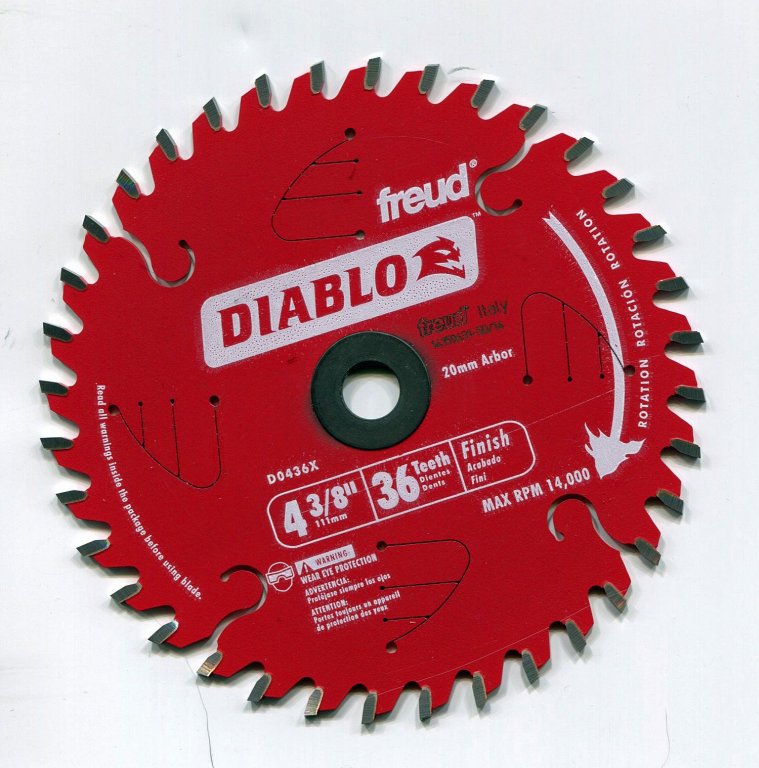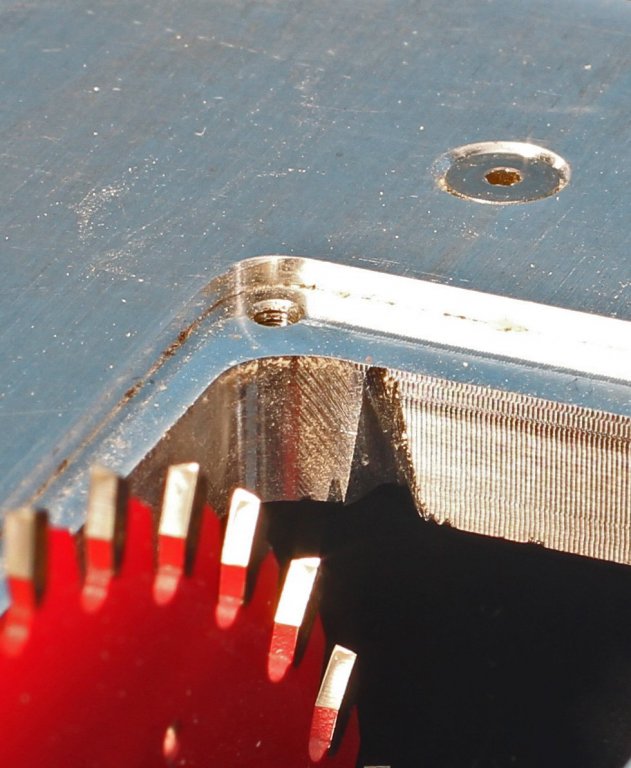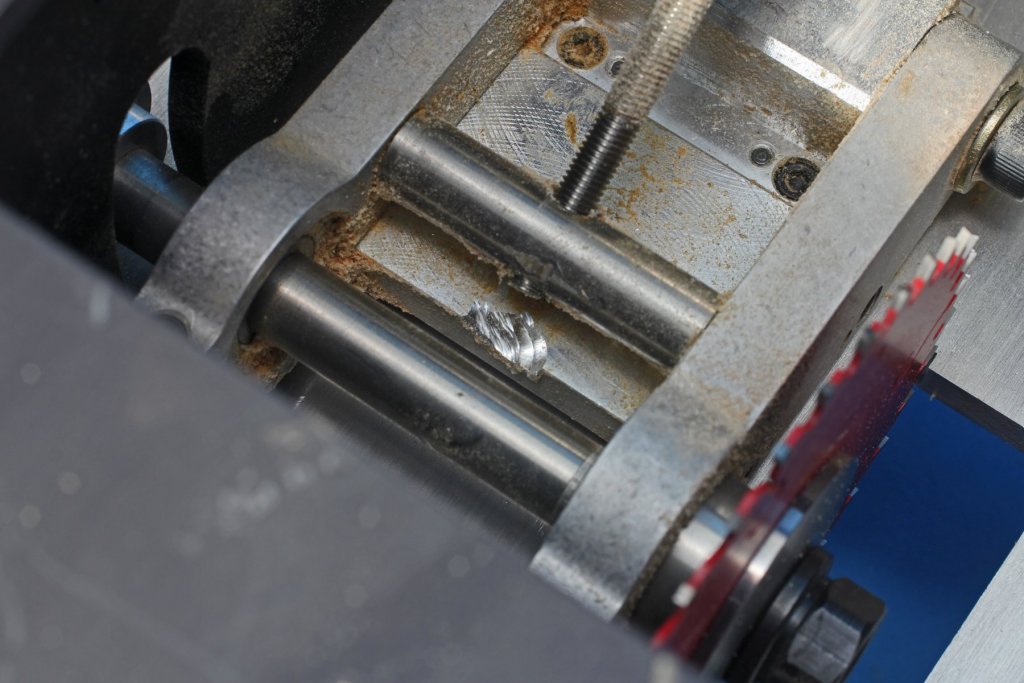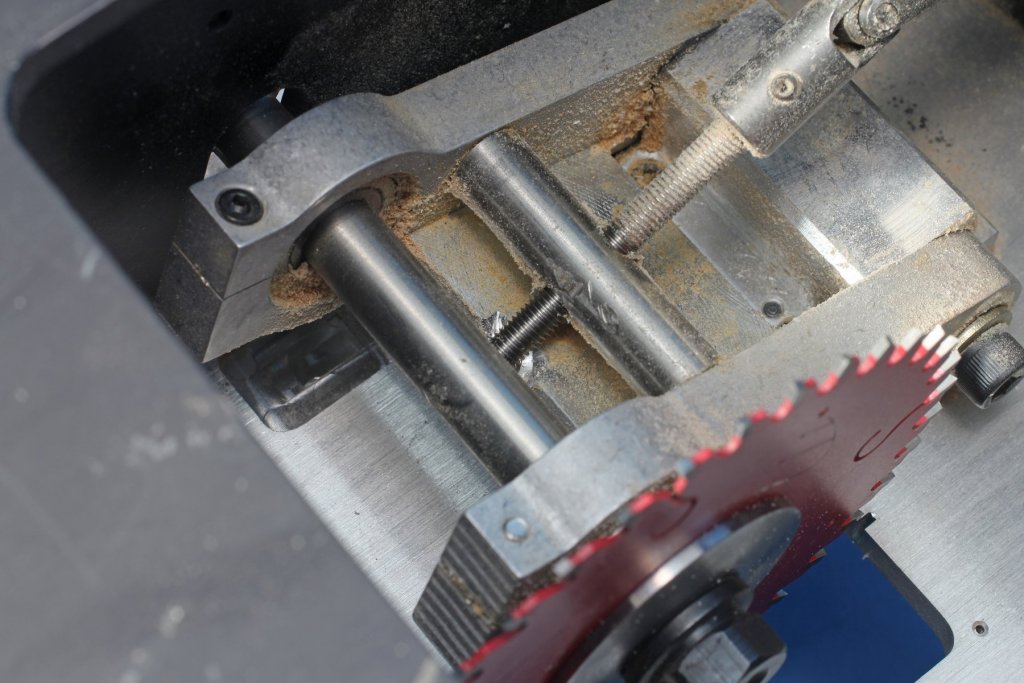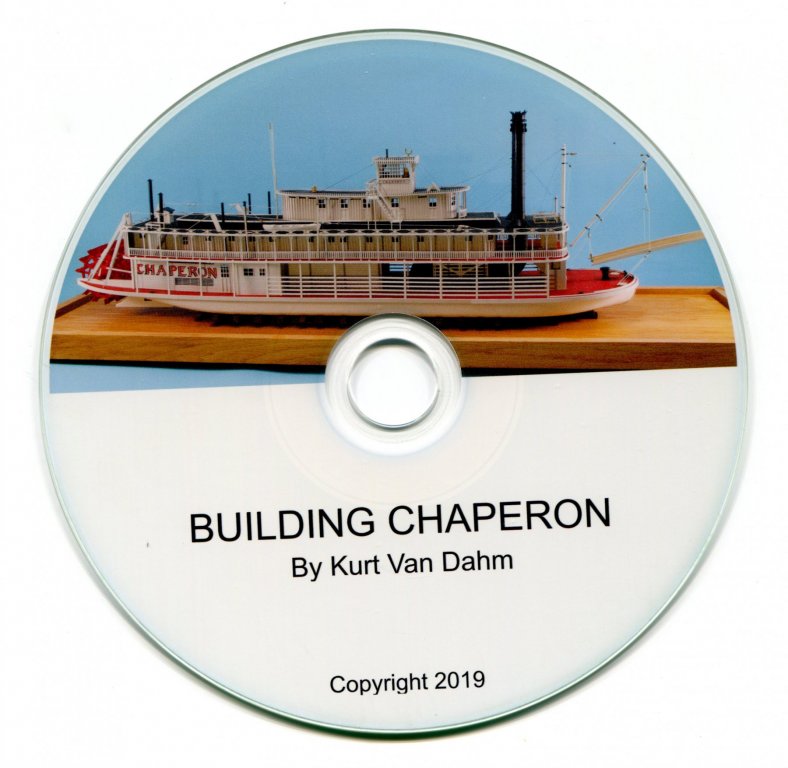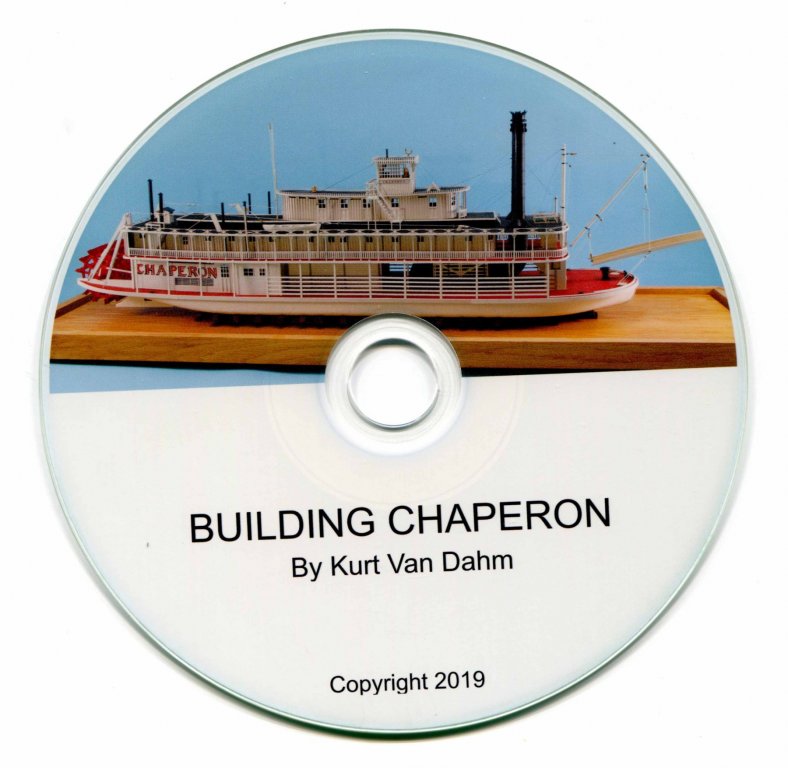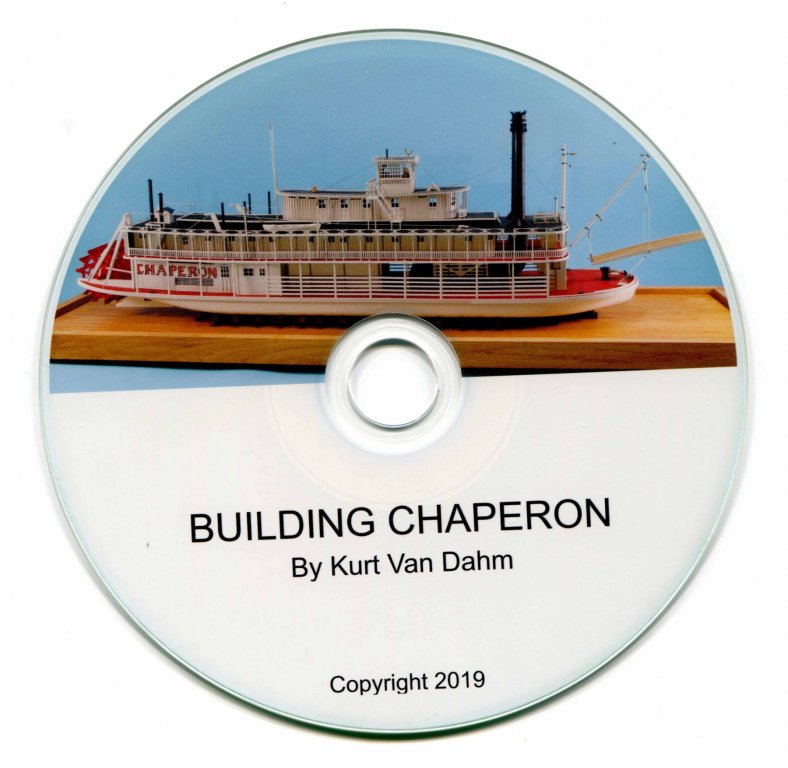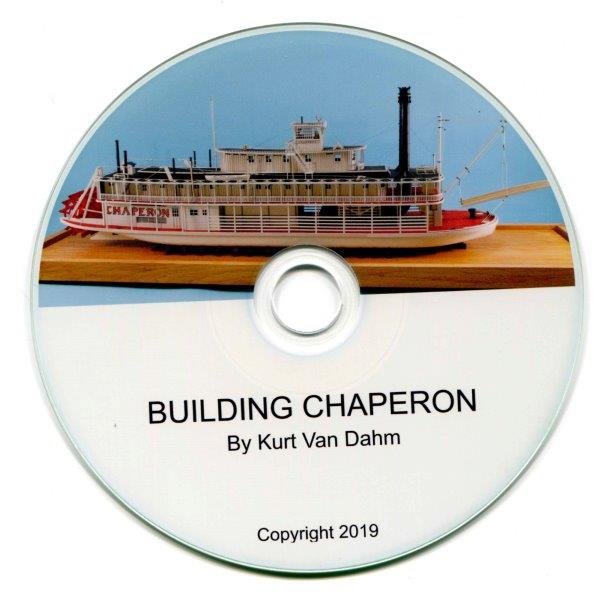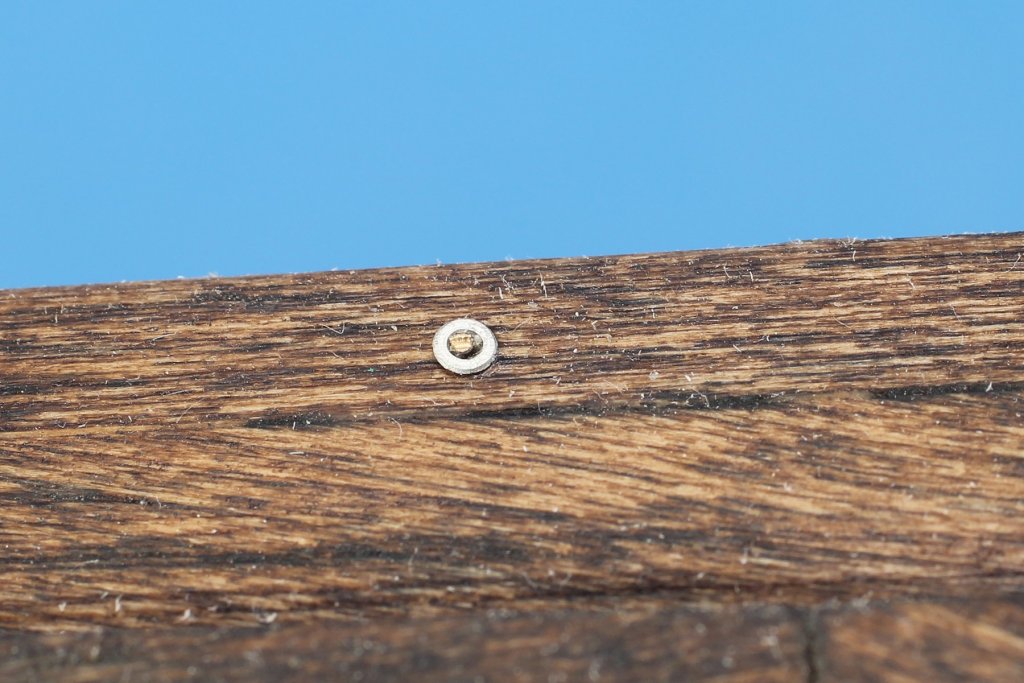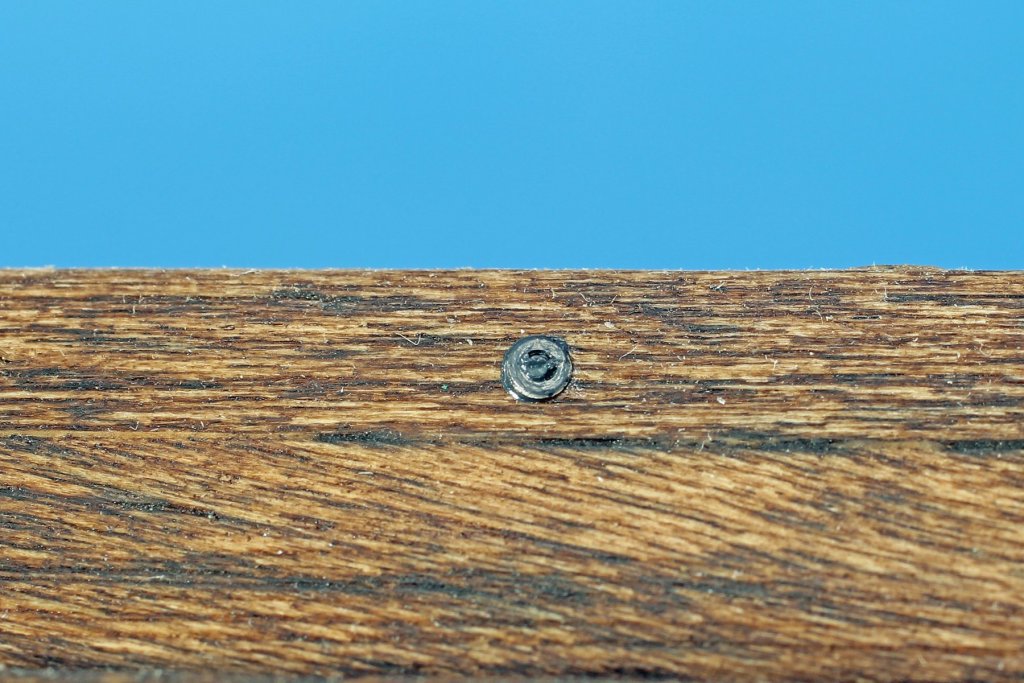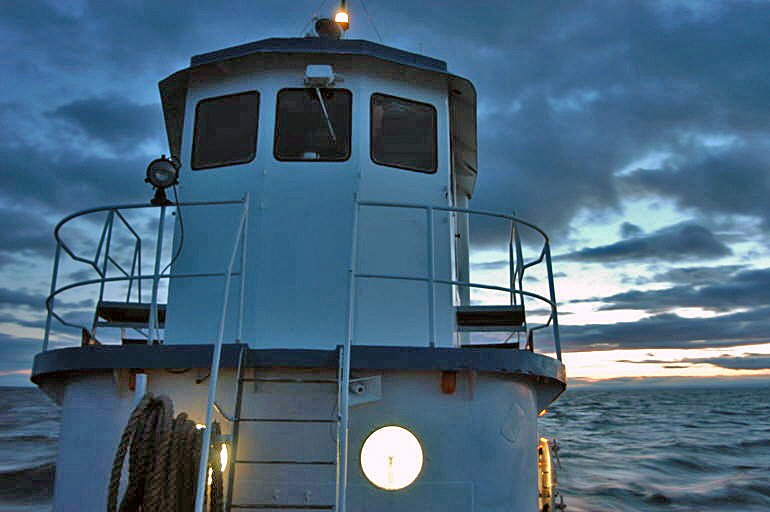-
Posts
3,026 -
Joined
-
Last visited
Content Type
Profiles
Forums
Gallery
Events
Everything posted by kurtvd19
-
There was no #1. The numbers were started sometime in the late 90's and were assigned starting at 1,001 in alphabetical order . Numbers have been not been reassigned after a member died or left the NRG - as we have had members come back after several years. A new member is assigned a new unused number. Kurt
-
David: I wanted to use a good quality blade like I do on my big 10-inch saw and this Freud blade has all the features found on their large blades. Laser cut cooling slots and all. I am very happy with the performance. Kurt
-
The carbide blade I use is a 36 tooth - 4 3/8-inch - Freud Diablo Finish blade. This is a larger blade than the saw is designed to use but the modifications are easy to do. I purchase the blades on Amazon and they usually run me about $15. The second photo shows the modification needed to the saw to fit the blade. Install the blade and w/o using a clearance plate turn the saw on and raise the blade. It is going to contact the back side of the opening in the aluminum table. Continue to raise the blade to it's maximum. Lower the blade as far as it will go. Using a "V" file enlarge the slot the blade cut in the table as shown in the photo being sure to widen the slot the blade cut so there is no further blade to table contact. The blade being larger dia than what the saw is designed to use will not be able to lower below the table top - it will be about 3/8-inch above the top. There is an additional modification needed to be able to lower the blade all the way. The screw that raises and lowers the blade hits a part of the mechanism that needs to have clearance for the screw. The other 2 photos show the modification I made using my Foredom tool with a ball grinder bit. The first photo shows the area I ground away and the second shows how the screw now clears the piece that formerly interfered. I talked to Jim about the changes I made and he said I did it the right way - I am sure if he did it the area ground away would be pristine and ground away to the thousandth of a inch - but what I did works. Carbide blades work well for cutting aluminum and this little bit of cutting didn't affect the blades sharpness at all. But I do cut aluminum and brass at times so I got 2 blades and use one marked "M: for metal - non ferrous metals only! I am very happy with the set up and showed it at the last NRG conference in 2018. Kurt
-
I use a carbide blade 98% of the time. I know there is more lost to sawdust with a carbide blade than the Thurston blades, but in the overall scope of things the ease of use of the carbide blade outweighs the lost wood due to the wider kerf - at least in my opinion. Kurt
-
I have the cd or flash drive ready for sale for those wanting it. Kurt
- 76 replies
-
- model shipways
- chaperon
-
(and 1 more)
Tagged with:
-
BUILDING CHAPERON FROM THE MODEL SHIPWAYS KIT $13.99 on CD – Free Delivery – US Only $15.99 on Flash Drive – Free Delivery – US Only I built this model starting in 2009 and completed it in 2010 from the newly released kit from Model Shipways – part of Model Expo. The construction of the model was documented in a series of six articles in Ships in Scale Magazine (SiS) starting with the Sept./Oct. 2009 issue, culminating with the July/August 2010 issue. Over the years, modelers have contacted me about supplying copies of various parts of the series they were missing and unable to obtain. Some of the back issues were out of print for some time and when Ships in Scale went out of business in 2018 all the back issues containing the articles were no longer available. Scanning magazine copies isn’t legal as SiS owned the copyright to the articles as published in the magazine though I own the copyright to the original text and photographs. Each time I got a request I had to copy the text files and photographs and email them to the modeler. I like to help other modelers, but this was taking a lot of time and energy, so I decided to take the time and put the series together into a digital book. The digital book contains the complete series as it was written. The magazine’s editor moved some parts of the assembly sequence around to fit space considerations without worrying about them being out of sequence. The correct sequence has been restored. I decided to double space the text for ease of use in the shop as the PDF format isn’t like a magazine where the number of pages is limited. In addition to being back in the original sequence, the photographs are all color rather than B/W – a big help when looking for details of construction. I have added a bit of information at the end showing two great models of Chaperon built by John Fryant. One is scratch built and the other is from this kit. The CD is only $13.99 with free delivery. A flash drive for those w/o disc drives is $15.99 with free delivery. Sorry but the free delivery is for US only and payable only by PayPal – at least for the immediate future. The CDs or flash drives ship in a mailer box for protection. Due to high shipping costs to other countries, a reduced file size PDF – but still very good image quality - will be emailed to non-US purchasers. Sorry but no sales to Russia or China except to full NRG members. Contact me by PM if you have questions or to order. Provide your email and I will provide mine. I can send a PayPal invoice with my PayPal address.
-
Not on my saw. If mine makes a noise it is with the flip of the switch and it's one "clink". There is a bit of sound from bounce in the motor and drive belt when operating but it makes a very slight, hardly noticeable, non metallic noise that disappears completely with a slight lift of the motor. Might be a bit of imbalance in the motor pulley - but I have used mine since 2003 - 16 years of pretty heavy use. If mine was making the sound in the video I would be checking it out. I had an addition to the house - the addition of a second floor over the whole house and my shop over the 3 car garage and I used this saw to do all the red oak trim. Much easier to move from room to room than the big chop saw - and as accurate if not more so. Cut through 3/4 read oak like it was balsa wood. Kurt
-
Here are the links for the saw and sander reviews. Anybody who has one of Jim's tools will agree they are the best. Kurt Saw Review https://www.youtube.com/watch?v=OncQ9__278Y Thickness Sander Review https://www.youtube.com/watch?v=MVCAYqrY3eM&t=1036s
-
Mine does it occasionally. Seems to be related to the height of the blade. I have checked it carefully and can't see any obvious sign of anything hitting on an adjacent piece - so I haven't been very concerned about it. Kurt
-

MS Gunboat Philadelphia Eyebolt/Ringbolt Washers
kurtvd19 replied to George in MN's topic in Wood ship model kits
George: Your idea of making some small washers is good. I have copied below text from part 4 of my series of articles om building the Philadelphia. I used some small washers I had in my parts supply and C/A was completely adequate to hold them together so I think soldering might be overkill. The photos show before the washer and end of the eyebolt were touched up with black paint and the other photo as completed. The washers are small and the photos show some unevenness of the bolt end - which might look like peeing - but at the scale of this detail it is not able to be seen w/o magnification of the close up photo. Hope this might help a bit. Kurt I wound up using a small 0.8mm (0.0315”) I. D. washer from Scale Hardware over the end of each bolt and secured with a very small drop of C/A glue. The C/A glue filled the very small gap between the washer and bolt and secured the washer to the hull and bolt as shown in Photo #63. When the bolt was cut off with a flush cutter, the end of the bolt and washer was touched with a bit of flat black paint. The result is a very convincing simulation of the washer and peened bolt arrangement on the boat as shown in Photo #64, a close up view of the final assembly. -
The Byrnes saw comes fully set up and you shouldn't have to adjust anything as it's pretty much pinned in alignment. Look at the way the fence indexes into the guides and you will see what I mean. Check out the topics posted above and you will be all set. Kurt
-
Love the Moran tug photo. Here is one to share with the tug lovers here. It's the tug Stamford off the Portland Head Lighthouse taken from another McAllister tug on the way to the Portland Tug Race. The Portland Head Lighthouse is the most photographed place in Maine but not too often from the water. Combines two of my interests in one photo. The NRG had been at the Portland Head light just days before during a conference. I wound up running late to catch the plane back from the conference when I spent too long watching these tugs come into the harbor in Portland for the race. The USCG Eagle was also there that day. I was lamenting missing the race so the photo was sent to me by the Capt. of the Stamford. This photo is my desktop screen saver.
- 63 replies
-
- revell
- harbor tug
-
(and 2 more)
Tagged with:
-
Bruce: Thanks for the kind words about the articles. They are now out of print and there are no physical back issues available from SiS or the NRG. And yes, they did edit Part 2 and 3 to fit. There wasn't anything left out but it they moved some shorter stuff into Part 2 to fit and put it into Part 3. The Part 3 stuff was out of sequence. I had forgotten about the edits completely until earlier this month when I was working on a PDF Book that will contain the entire series on the Chaperon with all the model building photos in color and it will have extra material that wasn't printed in the magazine series. I intend to make it available for a very affordable amount (TBD) on a CD or flash drive hopefully sometime in March. It will be some time before the series will be on a new and final disc of the Ships in Scale CD's we will sell through the NRG Store and the disc will contain only what was published, as it was published, including the goofed up editing. Take care, Kurt
- 76 replies
-
- model shipways
- chaperon
-
(and 1 more)
Tagged with:
-
Great overall appearance and finishing with so many added details is a nice touch. Bob Smith c/a is by far the best stuff available. If the hobby shop or mail order place show their name on a c/a bottle it is most likely Bob Smit's stuff as they offer this branding to customers. There is still a company id on the back side with the Bob Smith name as somebody else will probably offer the store branding some day but the BS stuff has done this since the mid 90's.
- 76 replies
-
- model shipways
- chaperon
-
(and 1 more)
Tagged with:
-
Dying cloth with tea look good for a short time - tea is very high in tannic acid and the cloth will be affected by the acid and it will deteriorate. It's happened to sails that have been dyed with tea. Check out Sculpy clay. You can shape it to the shape of a sack and then bake it in the oven to set it. Hobby Lobby and such stores carry it. Many colors so you might not even have to paint it.
-
I have been using these since their initial introduction. V2 is a big improvement - and they are worth the $$. Kurt
-
One can make a small fortune in model ship building. The trick is starting with a large fortune. I went to their site and looked at a bunch of the models and agree that the quality is all over the place. However, this is a business and time is money and it looks like they are able to deliver high quality - BUT the customer has to be willing to pay for the level of quality they desire. It all depends on what the model is for. Up on a shelf to be a decoration item (less detail) or in the waiting room or board room of a shipping company - a lot more detail. As to the contractual limits on building the same models after leaving the company that's not unusual. If a company's product or IP isn't protected they can soon find themselves competing with former employees unfairly. Kurt
-

Can i live without a BYRNES TABLE SAW
kurtvd19 replied to shihawk's topic in Modeling tools and Workshop Equipment
I clamp a piece of ply over the plate and raise the blade through the plate and the ply. Gives backing to the plate and makes the slot cleaner. -
Yes, it's a vent for one of the fuel tanks. There is another directly opposite.
- 63 replies
-
- revell
- harbor tug
-
(and 2 more)
Tagged with:
-
The kit is a model of a DPC Tug built during WWII. They were built on a rush basis due to the number of tankers being sunk off the east coast of the US early in WWII. The tankers being sunk created severe shortages of fuel oil for heating in the NE so these tugs were designed so that barges could be pulled closer to shore or in the intercoastal waterways where the U Boats couldn’t get to them The Office of Defense Transportation planned 100 Diesel tugs of 85’ x 24’ x 8’ and 500 barges and turned over the designing and superintending the construction of this fleet to the Philadelphia district office of the Engineer Corps, US Army. The plans called for 100 identical tugs in order to facilitate the construction as ordering 100 of each component would simplify the manufacturing and later the servicing of the boats. This also shortened procurement time as it was critical to get the tugs into service as soon as possible. In October of 1943 the Defense Plant Corporation placed an order for the Engineer Corps, US Army for the Defense Plant Corporation (DPC) for 100 diesel tug boats. The order for the 100 tugs was divided into contracts to six shipyards with individual contracts from a low of 4 tugs to a high of 42. The Long Beach shown on the kit box was based in LA and was a DPC tug as indicated by the pilothouse being squared up rather than round for the ease of production. There was also the Los Angeles another DPC Tug that was essentially identical to the Long Beach - only the name boards were different. The photos are of DPC tugs - The Becky E is shown under conversion to a live aboard in Lemont, IL. The head on of the pilot house at dawn is Miss Laura in Duluth and the Tipperary is also in Duluth. The Long Beach is shown following the Los Angeles. Kurt
- 63 replies
-
- revell
- harbor tug
-
(and 2 more)
Tagged with:
-
Eric: Something I read or maybe when I was at the museum and talked with the one brother that I seem to recall something about the mule being at the stern. I think that at that point (the museum was just opened and a lot more has been put on display since) there might have even been some sort of placard or indication of the spot evidence of the mule was found. I might be totally wrong but this is my recollection. Kurt
- 599 replies
-
- sidewheeler
- arabia
-
(and 4 more)
Tagged with:
-
If you started with Syren blacks for your current build I would wait for them to be back in stock. Any others on the same model will stand out like a sore thumb in comparison. Place an order with Syren ASAP and work on another area in the meantime.
-
Eric: If I remember correctly wasn't there a mule on the aft end that died when it sank? The B option (like the Mary MacDonald) has a space for the mule while A doesn't. Kurt
- 599 replies
-
- sidewheeler
- arabia
-
(and 4 more)
Tagged with:
About us
Modelshipworld - Advancing Ship Modeling through Research
SSL Secured
Your security is important for us so this Website is SSL-Secured
NRG Mailing Address
Nautical Research Guild
237 South Lincoln Street
Westmont IL, 60559-1917
Model Ship World ® and the MSW logo are Registered Trademarks, and belong to the Nautical Research Guild (United States Patent and Trademark Office: No. 6,929,264 & No. 6,929,274, registered Dec. 20, 2022)
Helpful Links
About the NRG
If you enjoy building ship models that are historically accurate as well as beautiful, then The Nautical Research Guild (NRG) is just right for you.
The Guild is a non-profit educational organization whose mission is to “Advance Ship Modeling Through Research”. We provide support to our members in their efforts to raise the quality of their model ships.
The Nautical Research Guild has published our world-renowned quarterly magazine, The Nautical Research Journal, since 1955. The pages of the Journal are full of articles by accomplished ship modelers who show you how they create those exquisite details on their models, and by maritime historians who show you the correct details to build. The Journal is available in both print and digital editions. Go to the NRG web site (www.thenrg.org) to download a complimentary digital copy of the Journal. The NRG also publishes plan sets, books and compilations of back issues of the Journal and the former Ships in Scale and Model Ship Builder magazines.



